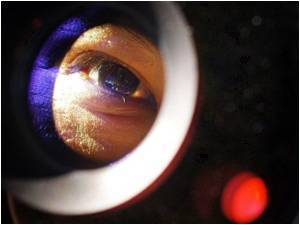
The iris controls the size of the pupil and gives colour to a person's eyes and later grows into a complex, unique pattern as a fetus develops, and remains the same throughout a person's life.
"You might assume that there is no similarity in iris texture, but you would be wrong," New Scientist quoted Bowyer as saying.
A typical iris scan includes a camera snap image of a person's eye while it is bathed in near-infrared light after which the software identifies the iris portion of the eye and then analyses 1024 sample regions, looking for patterns in the way the delicate filaments of tissue, known as the stroma, reflect light.
This unique information is then used to generate a code of binary numbers.
For the study, Bowyer added a layer of complexity to the typical iris scan and for each of the sample regions their software identified features such as lines or spots in the stroma, and saved the information.
Advertisement
The researchers then trained an algorithm to look for common features among irises of known ethnicity and gender with the help of the new additions to the typical iris scan.
Advertisement
"It is interesting work that does fly a bit in the face of conventional thinking," Vijayakumar Bhagavatula of Carnegie Mellon University in Pittsburgh, Pennsylvania, said.
"In the absence of an established biological connection between iris pattern and gender or ethnicity, there is no way to know if the features being used by Bowyer are the 'best' ones to use. There may be other features that give better prediction rates," he added.
The team will be presenting the research at the IEEE International Conference on Technologies for Homeland Security in Waltham, Massachusetts, next month.
Source-ANI












